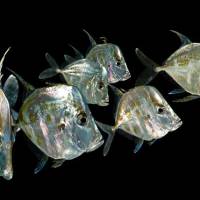Acrylic vs. Glass
Acrylic, a superior choiceThere are many reasons why acrylic has become the best option for aquariums for strength, weight and better viewing properties.
Strength
It is widely accepted that acrylic is 16-17 times stronger than glass of the same thickness, with much better impact resistance. Because the joints are chemically bonded, not simply siliconed together, they are also stronger as well, and much more appealing visually. They do not run the risk of blowing out as siliconed joints can. The strength of acrylic tanks give their owners the peace of mind knowing that their tank will not crack, shatter, or blow out unexpectedly.
Light-Weight
Better viewing properties
Acrylic of any thickness is clearer than glass due to its natural composition and properties. It does not have a greenish tint and will not ever turn yellow, like the acrylics of yesterday could. Acrylic will not distort like glass will, especially when viewing your tank at an angle. It also has a better light transmission level. You will find few larger public displays that are not done out of acrylic.
Better insulating properties
Acrylic will not conduct heat and cold as well as glass will, thus making it a better insulator by 20%. Acrylic aquariums will regulate and minimize temperature fluctuations better, giving you a more stable system. This characteristic also saves on electricity, as your heater (or chiller) does not need to work as hard.
Forming characteristics
Because acrylic is a thermoplastic it can be formed in almost any way, which makes tank design possibilities almost limitless. Custom curves and bends are much easier to do with acrylic, and sometimes impossible to do with glass. Glass has limitations on size while acrylic does not. For many custom shapes and unique designs, there is no other choice. Spectacular viewing possibilities are available because of the versatility of acrylic. It is also possible for anyone to drill their own acrylic tank while it is often difficult to find somebody to drill a glass tank if you need it done. Acrylic tank joints are also more visually appealing as they are clear and do not require the use of silicone. They may also be rounded over for extra beauty as well as to eliminate sharp edges.
Refinish-able
The one disadvantage of acrylic is that it scratches easier than glass. However, a wide variety of scratch removal kits are available to the consumer and are relatively easy to use. Scratches in glass are nearly impossible to remove. Scratches in acrylic are easily preventable with proper care and precautions. When cleaning the interior of your tank, do not go all the way down to the gravel line right away. Do the entire tank but leave an inch or two above the gravel line. Do this last. This reduces the chance that you will pick up a bit of gravel on your brush or magnet and scratch the tank. Trying to get too creative with decorations by stacking them up precariously has led to many scratches as well when they are toppled by fish or currents. Scratching is usually the #1 concern considering an acrylic tank, and is easily preventable with proper care.



